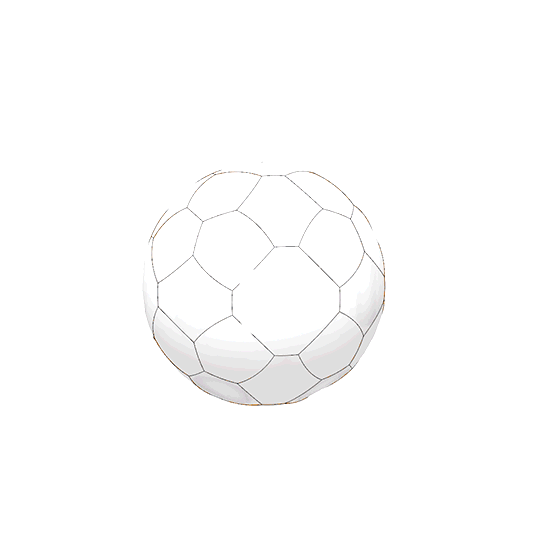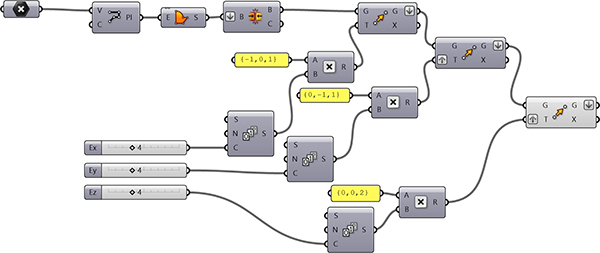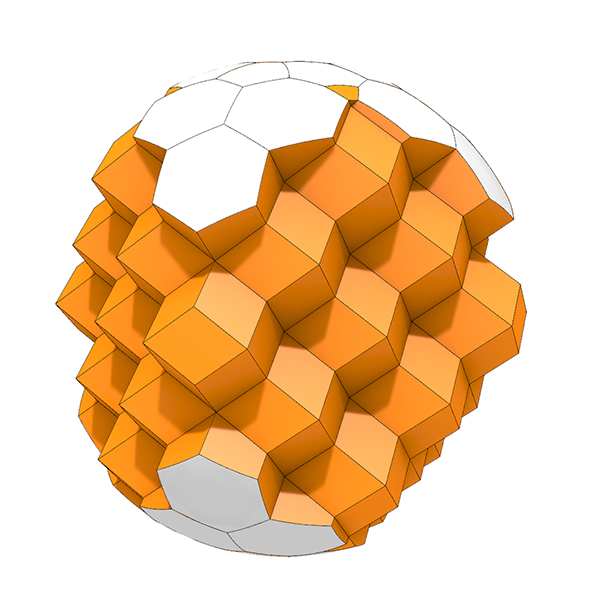Space-filling Rhombic Dodecahedra
by Tuğrul Yazar | February 10, 2024 18:24
The rhombic dodecahedron[1] is a polyhedron with twelve rhombus-shaped faces, where each face has four sides of equal length. It is possible to construct the space-filling[2] variant of the rhombic dodecahedron by arranging multiple such rhombic dodecahedra in a regular pattern so that they fill space without leaving any gaps. In his 1611 work on snowflakes titled “Strena seu de Nive Sexangula,” Johannes Kepler observed that honey bees utilize the geometric structure of rhombic dodecahedra to construct honeycombs. These honeycombs consist of a tessellation of cells, with each cell being a hexagonal prism topped with half a rhombic dodecahedron. I generated this structure in Grasshopper by utilizing the vertex coordinates of the polyhedron. Then, I defined three vectors to copy it in three directions. You can cut the output of the code and analyze the interior spaces, as seen in the animation.

This Grasshopper definition generates the Space-filling Rhombic Dodecahedra structure. The input parameters are the number of cells in three directions. The output of the definition is the solid 3d model. It has a structure with individual cells. Therefore, it is ready for 3d printing. The code is using native Grasshopper components. Thus, no add-ons are necessary for it to work.

You can rebuild the definition by looking at the definition above. However, you will need the vertex coordinates of the Rhombic Dodecahedron. You can check the Parakeet add-on[3] to get them probably. However, would you consider being my Patreon if you want to support this website and download my Grasshopper file? Here is the link to my Patreon page[4], including the Space-filling Rhombic Dodecahedron and more. Thank you.

- dodecahedron: https://www.designcoding.net/construction-of-dodecahedron/
- space-filling: https://www.designcoding.net/weaire-phelan-polyhedra/
- Parakeet add-on: https://www.food4rhino.com/en/app/parakeet
- Here is the link to my Patreon page: https://www.patreon.com/posts/space-filling-98220785?utm_medium=clipboard_copy&utm_source=copyLink&utm_campaign=postshare_creator&utm_content=join_link
Source URL: https://www.designcoding.net/space-filling-rhombic-dodecahedra/